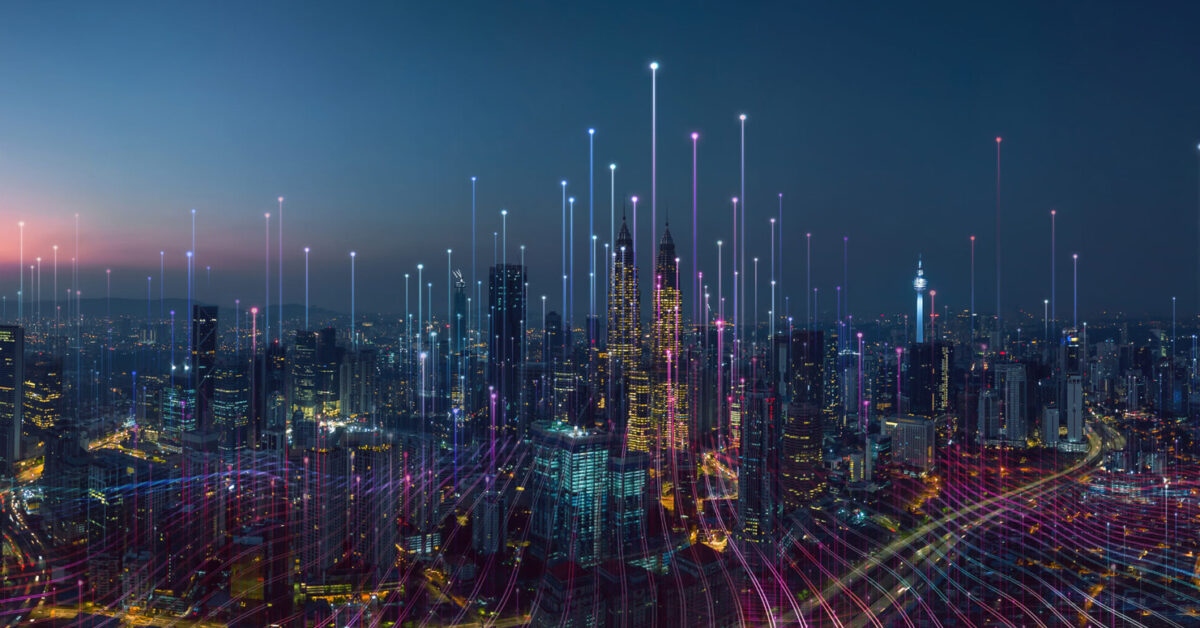
How to Make Smart Energy Work for Apartments
Originally appeared in Energy Central. Article has been adapted for clarity.
The Internet of Things (IoT) is enabling and thriving in many industries, including energy utilities. According to Microsoft, “IoT is becoming indispensable to commercial organizations.” These IoT innovations have also inevitably affected the energy industry, but the adoption is gradual. Let’s explore this by diving into the intersection of IoT technology in smart apartments and the energy sector.
What does the intersection of smart apartment technology and the energy sector look like?
Energy providers’ smart device rebates and demand response programs have been created to jumpstart smart energy management. These programs have been largely successful and cost-effective.
However, this intersection generally excludes multifamily Building Owners, Operators, and Residents from participating.
As these smart energy management programs have been designed for single-family homes, it does not take into account how multifamily Building Owners, Managers, and Residents might participate. For example, most energy saving programs with smart thermostats require the Resident to purchase a device on their own then opt in to the program. This works well for single-family homes, as the Residents of that home also own the smart device. On the other hand, multifamily Developers who install thermostats and other energy saving devices, property-wide, cannot follow this same protocol.
Thus, an entire asset class of commercial real estate is left out of participating.
There are some energy providers that do accommodate multifamily incentives, including Austin Energy and Puget Sound Energy.
However, there is much to be gained in energy efficiency by better bridging smart technology and energy in multifamily. For a Property Manager or Owner, reducing utility costs is an operational expenditure mandate. But how can this be possible when there are other responsibilities that ensure Resident comfort and safety?
What could the intersection of smart apartment technology and the energy sector look like?
The Smart Energy Summit in Austin gave us a clearer picture of the existing intersection between smart home and smart apartment technology and the energy sector, as well as future possibilities. The following are some examples:
- Demand response programs that are available for the entire building (including Resident units) for Multifamily property owners. STRATIS has recently won a grant from the National Renewable Energy Laboratory (NREL) to research the total kilowatt peak demand for smart devices connected to the STRATIS platform. This includes devices such as smart hot waters and thermostats.
- Further R&D into cutting edge technology by utility companies that serve markets with a large share of ratepayers with Multifamily properties. This would incentivize growth and scale. Austin Energy and ConEdison are examples of service providers that have already implemented this. STRATIS collaborates with leading Energy Service Companies (ESCOs) such as MaGrann Associates, to design utility pilot proposals that test the cost-effectiveness of energy conservation measures.
- Strong incentives for energy saving “features” and their outcomes, rather than only for the simple presence of particular smart devices. This opens up energy saving incentives to various companies to innovate to do this lighter, quicker, and cheaper.
- Water waste prevention with water valve actuators and IoT sensor technology can conserve energy lost from catastrophic water leak events. This would also significantly decrease damages and Resident distress. STRATIS integrates with powerful water leak sensors including those from Inovonics, H2O Degree, and FortrezZ.
- Utility-Multifamily technology partnerships, smart apartment technology and the energy industry can deliver improved energy and economic efficiencies to public stakeholders. In income-qualified communities, IoT-enabled buildings could deliver energy savings and property-wide Internet access.
- Alliances with technology and energy procurement firms can deliver low-price electricity contracts for multifamily buildings. With the right information and technology, property managers can operate their buildings to minimize energy waste and operational expenditures. Companies that are nimble and provide services at a lower cost like Inspire, Calpine, and Direct Energy are better positioned and more flexible to deliver technology-based benefits and products.
Energy management, operational efficiency maximization, and clean energy advancement are central to the goal of a future with a complete technology solution for multifamily building management and Resident experience. STRATIS’ original mission began in scaling energy management within multifamily housing, and is a core to the company’s goals.
STRATIS®, a RealPage Company, creates smart apartments and intelligent buildings and is the only platform of its kind built for the complexities of multifamily and student housing. STRATIS is installed worldwide across the U.S., in Japan, the UK, EU, and Latin America. STRATIS now serves hospitality, retail, and small to mid-size commercial, as well. STRATIS is an Inc. Magazine “Fastest Growing Company in America” and a Top Ten Entrepreneur Magazine “Best Company in America.” STRATIS was recently acquired by RealPage to enable STRATIS Smart Building, a more connected lifestyle, and unleash hidden yield through new revenue streams.
STRATIS®, a RealPage Company, creates smart apartments and intelligent buildings and is the only platform of its kind built for the complexities of multifamily and student housing. STRATIS is installed worldwide across the U.S., in Japan, the UK, EU, and Latin America. STRATIS now serves hospitality, retail, and small to mid-size commercial, as well. STRATIS is an Inc. Magazine “Fastest Growing Company in America” and a Top Ten Entrepreneur Magazine “Best Company in America.” STRATIS was recently acquired by RealPage to enable STRATIS Smart Building, a more connected lifestyle, and unleash hidden yield through new revenue streams.